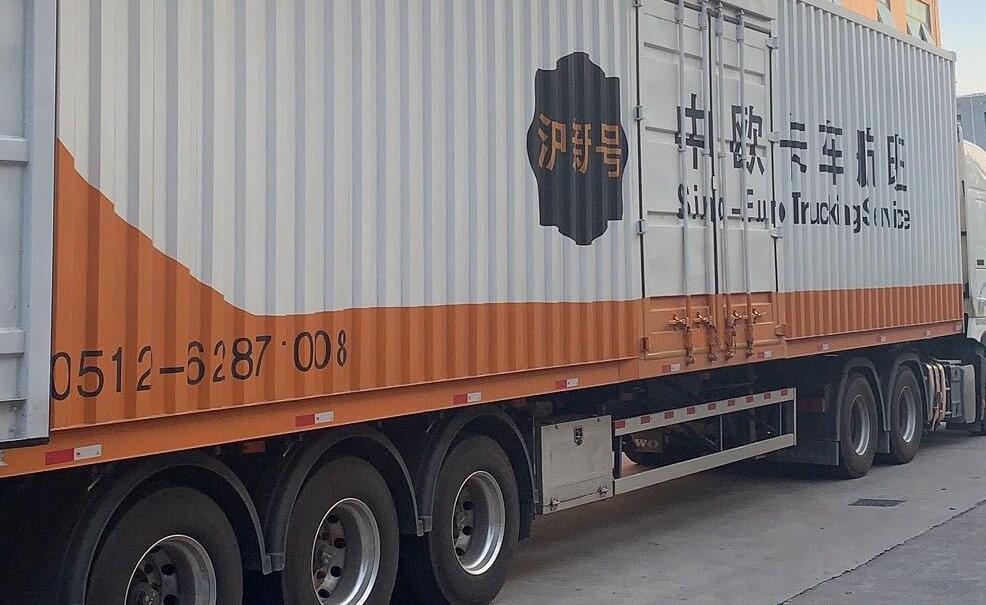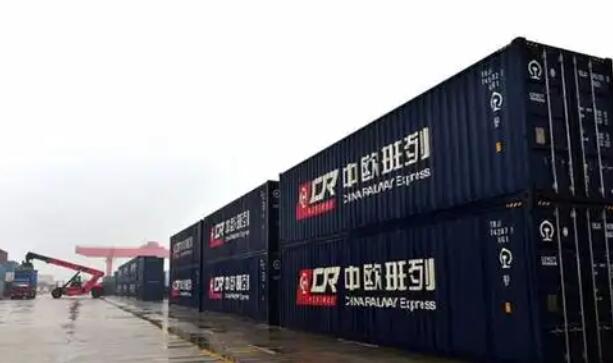Do you know all these differences between shipowner's bill of lading and freight forwarder's bill of
Owner's bill of lading refers to ocean bill of lading (master b/l, also called
master bill, ocean bill of lading, abbreviated as m bill) issued by shipping
company, which can be issued to direct owner (at this time, freight forwarder
can not issue bill of lading) or freight forwarder (at this time, freight
forwarder issues bill of lading to direct owner). Freight forwarder bill of
lading (house b/l, also called sub-bill of lading, referred to as h bill) should
be called NVOCC (first-class freight forwarder, which has been certified in
China since 2002, and can only be approved if the freight forwarder pays a
deposit at the bank designated by the Ministry of Communications). It is a bill
of lading issued by a freight forwarder who has been approved by the Ministry of
Communications and registered to obtain NVOCC (non-vessel operating common
carrier) qualification, and is generally issued to direct customers Sometimes, a
peer applies a bill of lading, at which time the bill of lading is issued to the
peer, and the peer will issue its own bill of lading to its direct owner. At
present, there are more export orders from HOUSE, especially to Europe and
America. For exporters, both bills of lading can be used as negotiation
documents and will be accepted by banks. The difference between the two 1. The
contents of SHIPPER and CONSIGNEE columns on the bill of lading are different.
SHIPPER shipper of freight forwarding bill of lading is the actual exporter
(direct owner), and CONSIGNEE consignee generally fills in the same column of
consignment note according to the provisions of the letter of credit, usually TO
order; When the M bill is issued to the actual exporter, the SHIPPER shipper
fills in the exporter and the CONSIGNEE consignee fills in according to the
consignment note; When it is issued to the forwarder, the SHIPPER shipper fills
the forwarder, and the CONSIGNEE consignee fills the forwarder's agent at the
destination port. 2. The procedures for changing bills at destination ports are
different. As long as you hold the M order, you can exchange the import bill of
lading directly at the shipping agency of the destination port. The procedure is
simple and fast, and the cost is relatively fixed and cheap; However, the holder
of the H bill must go to the destination port forwarder to exchange the M bill
before he can get the bill of lading and go through the formalities of customs
declaration and delivery, and the bill exchange cost is expensive and not fixed,
which is entirely determined by the destination port forwarder. 3. As a bill of
lading, M is the most basic and true document of title, and the shipping company
will deliver the goods to the consignee indicated on M at the destination port.
If the exporter gets the H bill, it means that the actual control of the shipped
goods is in the hands of the freight forwarder (at this time, the consignee of
the M bill is the agent of the freight forwarder at the destination port), and
if the freight forwarder goes bankrupt, the exporter (importer) cannot pick up
the goods from the shipping company with H. 4. For the whole case, both M and H
orders can be issued, and only H orders can be issued for the packed goods,
because the shipping company will not help the shippers to pack the cases, nor
will it help the shippers to distribute the goods at the destination port. 5.
The B/L number of the general freight forwarder does not enter the customs
manifest management system, which is different from the bill of lading number on
the import declaration form; B/L of the freight forwarder has the name and
contact information of the forwarder, but the contact company is not a port
forwarder such as foreign forwarder or sinotrans. H list also has the following
advantages 1. For FOB terms, in to pay the freight business, the freight
forwarder usually needs to call the consignee of the main order to the agent at
the destination port, and then the freight forwarder issues the sub-order to the
customer, and the destination port agent will collect the freight from the
consignee in the future. On the one hand, shipping companies have certain
restrictions on to pay the freight, and on the other hand, the difference
between the shipping company's price and the price quoted to customers is not
easy to handle if only the main bill is issued. However, agents can deal with
this problem in a very special way. 2. For the business of DDU and DDP, the
shipping company will only be responsible for delivering the goods to the
destination port. If the consignor requires the freight forwarder to provide
one-stop service, then the freight forwarder will need to issue a sub-bill, and
the main bill will be issued to his agent in the destination port, who will be
responsible for customs clearance, delivery and even paying taxes in the
destination port. This is the popular door-to-door service at present, and the
freight forwarder is responsible for picking up the goods from the shipper's
door to the consignee's door. 3. For the business in triangle trade, the
domestic freight forwarder will ask the shipping company to issue the whole
master order to itself, and then issue a set of sub-orders where the shipper is
the supplier and the consignee is the middleman; Then SWITCH BILL OF LADING is
made at the place where the middlemen are located, that is, the shipper of the
bill of lading is the middlemen and the consignee is the consignee at the actual
destination port. 4. For several customers' small goods, a container will be put
together to the same destination port. At this time, the freight forwarder will
adopt the method of attaching more points to the CONSIGN of the main order, and
then issue several sub-orders to each customer. The sub-orders are numbered as
001A, 001B, 001C ... In the future, the agent of the destination port will put
out this container, and the customer will pick it up at the destination port by
virtue of the customs clearance of the sub-orders. 5. Under the L/C payment
method (the L/C also stipulates that the H bill is acceptable), if the exporter
cannot produce the goods within the specified delivery date and cannot ship the
goods on time, he can ask the freight forwarder to issue HB/L and sign the bill
of lading in reverse, and of course the freight forwarder will ask for a letter
of guarantee. picture MBL and HBL processes 1.SHIPPER passes the consignment
note to FORWARDER, stating whether the whole case or the LCL. 2.FORWARDER will
book the cabin with the shipping company, and the ship will be ON BOARD. The
shipping company issued MBL to FORWARDER. The SHIPPER of MBL is the FORWARDER of
the port of departure, and CNEE is generally the branch or agent of FORWARDER's
destination port. 3.FOWARDER signs HBL to SHIPPER. SHIPPER of HBL is the real
owner. CNEE usually makes a letter of credit by TO ORDER. 4.CARRIER will deliver
the goods to the destination port after the ship leaves. 5.FORWARDER sends MBL
to the branch of destination port through DHL/UPS/TNT. (INCLUDING:CUSTOM
CLEARANCE DOCS) 6.SHIPPER will deliver the bill of lading to the domestic
negotiating bank within the delivery period and settle the foreign exchange.
Send documents directly to foreign guests if you do t/t shpper. 7. The
negotiating bank shall settle the full set of documents with the issuing bank.
8.CONSIGNEE pays the redemption slip to the issuing bank. 9. FORWARDER at the
port of destination takes MBL and exchanges the bill with the shipping company
for delivery and customs clearance. 10.CONSIGNEE takes HBL and picks up the
goods from FORWARDER. The distinction between freight forwarder bill of lading
and shipowner bill of lading The apparent distinction between freight forwarder
bill of lading and shipowner bill of lading: it can be distinguished from the
bill of lading of CARRIER or forwarder. Like big shipping companies, you can see
it at a glance, like EISU, PONL, ZIM, YML and so on. Distinguish shipowner's
bill of lading from freight forwarder's bill of lading mainly from the following
aspects: 1. freight forwarder's b/l (HB/l) bill of lading is unacceptable if
there is no special provision in the letter of credit. 2. The difference between
freight forwarder bill of lading and shipowner bill of lading is mainly in the
heading and signing. Issuer and signature of shipowner's bill of lading, ISBP
and UCP600 clearly stipulate that it is signed and issued by the carrier, the
captain or their named agent, and it appears as the name of the shipping
company, which can be known by some large shipping companies at a glance, such
as EISU, PONL, ZIMU, YMLU and so on. As long as the bill of lading of freight
forwarder is issued in the name of freight forwarder, it is not necessary to
show the name of the carrier, and it is not necessary to show that it is the
agent of the carrier and the captain. Finally, there is also a general freight
forwarder bill of lading, that is, a general freight forwarder bill of lading,
which can be signed as long as they have an agent at the destination port or can
borrow an agent. This kind of bill of lading is not strictly regulated in
practice, and there are stamps of AS CARRIER or ASAAgnet. Some freight
forwarders are not standardized, so they can sign or borrow in advance. It is
possible to falsify data. It is also this kind of bill of lading that is easy to
be deceived, and there is no evidence to check.










